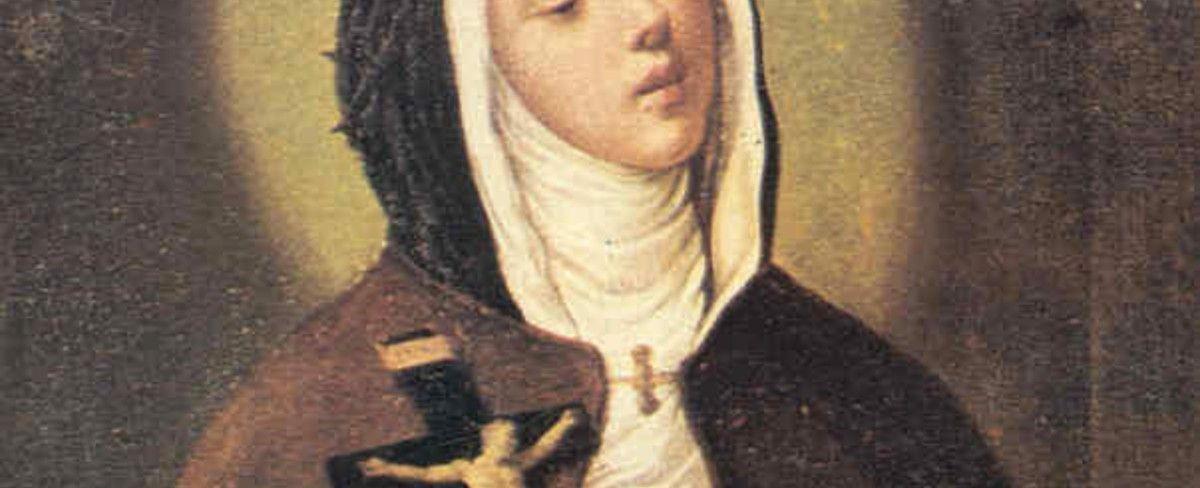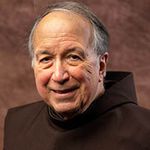Saint Veronica Giuliani: A Foremost Catholic Mystic

On July 10, the Franciscan family celebrates the memory of Saint Veronica Giuliani (1660-1727), a Capuchin Poor Clare nun who is one of the foremost mystics in the Catholic tradition.
Setting her heart on religious life
Born Orsola Giuliani in 1660, the youngest of seven daughters born to devout upper-class parents in Mercatello in the diocese of Urbino, she set her heart on a religious life from childhood. Her father was adamantly opposed to this as two of her older sisters had already entered the convent, but he finally relented, and at age 17, she joined the austere Capuchin Poor Clares in the town of Città di Castello in Umbria. She took the name Veronica out of devotion to the Passion; her one desire was to become a "true icon" of the Crucified Christ.

Capuchin Poor Clare monastery in Città di Castello, where Saint Veronica lived for over 50 years.
Concentrating on life of penance, devotion to the Passion
In the monastery, Veronica originally served in the kitchen, sacristy, and infirmary while concentrating on a life of penance and devotion to the Passion. Her intense prayer life, moreover, was coupled with great common sense and practical ability, and so in 1688 she was named mistress of novices, in which position she served over 35 years.

Cloister of Poor Clare monastery.
Favored by mystical gifts and stigmata
Veronica began to be favored by mystical gifts, having numerous visions of the suffering Christ: in 1694, marks of the crown of thorns appeared on her head. These experiences culminated on Good Friday 1697 when she received the stigmata, which she carried for the rest of her life.
Enduring restrictions in communal life
The hyper-orthodox mentality of those years, however, made authorities suspicious of the mystical phenomena she experienced; after receiving the stigmata she endured several years of various restrictions on her life in community, including being deprived of the office of novice mistress for a time.

Saint Veronica's cell in the monastery.
Improving monastery life
Against her protests, Veronica was elected abbess in 1716, an office she held until her death in 1727. As abbess, she made a number of improvements to the monastery, including piping in water for the convenience of her sisters, and left the community in excellent financial condition.
Writings became prime source for study of mysticism
In the 1690s Veronica began keeping a diary at the command of her spiritual director, eventually comprising some 22,000 handwritten pages, which has become a prime source for the modern study of mysticism. Veronica was canonized in 1839. The depth of her spiritual teaching has suggested to many that she be numbered among the Doctors of the Church.

Saint Veronica's incorrupt remains in Città di Castello.
Marked by Christ’s overwhelming love for her
Veronica's spiritual life was marked by her awareness of the overwhelming love of Christ for her, a love to which she wished to respond ever more deeply. She wanted all people to experience that same love:
O sinners. . .all men and all women, come to Jesus’ heart; come to be cleansed by his most precious blood. . . . He awaits you with open arms to embrace you.
Learn more about Saint Veronica’s spiritual teaching
For more insight into St Veronica’s spiritual teaching, see a perceptive instruction given by Pope Benedict XVI in 2010: https://www.vatican.va/content/benedict-xvi/en/audiences/2010/documents/hf_ben-xvi_aud_20101215.html
Dominic Monti, OFM
Professor of Franciscan Research in the Franciscan Institute of St. Bonaventure University
Dominic V. Monti, OFM, is a Franciscan Friar of Holy Name Province (USA) and currently professor of Franciscan Research in the Franciscan Institute of St. Bonaventure University. He devoted the greater part of his ministry to teaching the History of Christianity, in particular the history of the Franciscan movement. He has contributed two volumes to the Works of St. Bonaventure series and is author of Francis & His Brothers, a popular history of the Friars Minor.

